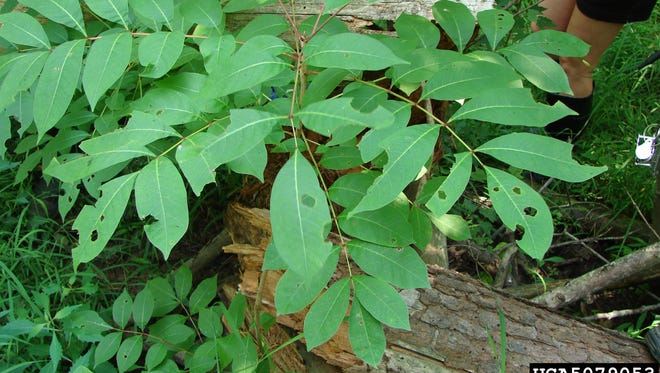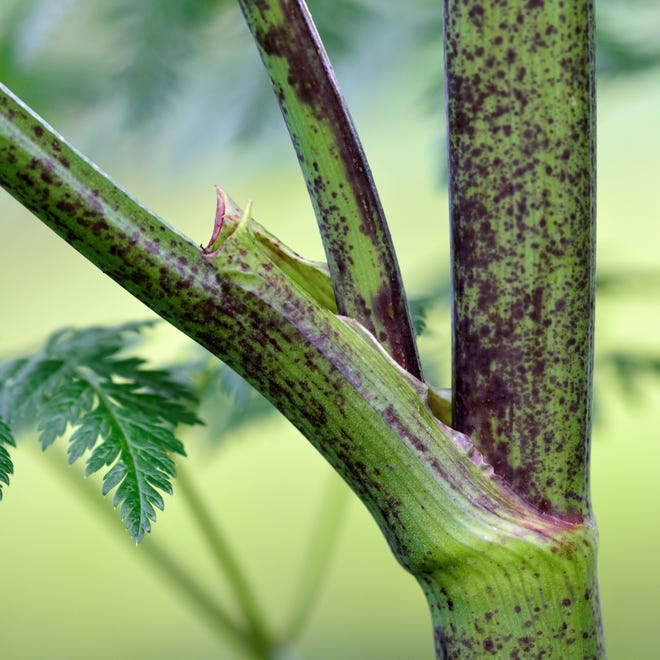After a long winter, flowers aren’t the only thing blooming in Delaware.
The First State is host to poison ivy, oak and sumac, as well as poison hemlock and the equally poisonous spotted water hemlock, but you shouldn’t let that keep you from enjoying the outdoors.
“It’s really just being aware of your surroundings when out in nature or in areas that are overgrown,” said the University of Delaware Cooperative Extension’s Blake Moore.
Reactions to contact with poisonous plants vary greatly. A mere brush with them will usually result in a rash at worst, but everyone reacts differently, experts say, so it’s important to know how to identify poisonous plants and steer clear.
The most extreme reactions, to include death, usually result from the ingestion of poisonous plants or the inhalation of their toxins.
Poison ivy, oak and sumac
All three of these plants release urushiol, an oil that can cause a rash or even blisters in humans, but poison ivy is likely the only one you’ll ever come across in Delaware.
Poison ivy is common and widespread, and Moore pointed out it’s a native plant with wildlife value. Various birds and mammals feed on the berries.
PLANTS:Smothering vines, burning bushes among invasive plants in Delaware. Try these natives.
“But it’s not something we want around our homes,” he said.
The old saying, “Leaves of three, let it be,” holds true. While some harmless plants also have three leaves, poison ivy’s appearance can be so varied, it’s best to avoid any plant with clusters of three leaves.

“The leaves can be round or serrated. It can grow as a vine, ground cover, up trees. It has that big, long, hairy root that can grow up trees,” said Garret Valencik, the Delaware Department of Agriculture’s noxious weed program manager.
Poison oak and sumac are “documented but uncommon,” Moore said, and are usually only seen in deep woods or wetlands.
ENVIRONMENT:Sussex changes wetland protections amid growth, but exceptions worry environmental groups
Poison oak is a low shrub that shares poison ivy’s three-leaf clusters. Its leaves are fuzzy and lobed with rounded tips, according to the U.S. Food and Drug Administration.
Poison sumac can appear as a low shrub or small tree and is mostly found in wetlands. It has clusters of seven to 13 smooth leaves.

Most pets aren’t sensitive to these plants, according to the FDA, but the oil can stick to their fur and transfer to humans. If your pet comes in contact with poison ivy, oak or sumac, give them a bath with gloves on.
MORE:‘No other option’: How Millsboro bypass will affect rare, threatened, endangered species
Poison hemlock and spotted water hemlock
Both poison hemlock and spotted water hemlock look similar to the very common Queen Anne’s Lace, or wild carrot.
An easy way to tell them apart: wild carrot has a hairy stem, while hemlock stems are smooth. Both have “small white flowers in umbrella-like groupings,” according to the Department of Agriculture.
“Foragers who eat wild carrot have to be careful, but they usually know what they’re doing,” Valencik said. “They’re toxic to pets, too.”

Poison hemlock is an invasive plant that grows to between six and eight feet tall. The stems can have purple blotches and the leaves are dark glossy green, fern-like, triangular and lacey according to the Department of Agriculture.
“We’re seeing poison hemlock quite a bit this year,” Valencik said. “It’s widespread throughout the state. It’s usually near water but it can be found in garden beds if a seed happens to blow in.”
Poison hemlock can also be found in ditches and meadows. It is important to keep it out of areas where livestock feed.
MORE:How Wilmington is trying to leverage the power of trees in its effort to fight crime
Spotted water hemlock is a native plant, almost always found in wetlands or growing along a body of water. It grows up to six feet tall, and the stems can be green, purple, or both. Its leaves are also lacey and fern-like. Some people say spotted water hemlock has a musty smell, according to Valencik.
Removing poisonous plants
When it comes to your yard, you can always glove up, carefully pull plants from the ground and put them in the trash can.
“It’s always a good idea to wear gloves while weeding,” Valencik said.
If you’re particularly sensitive to poisonous plants, there’s no shame in leaving the job to someone else.
INSECTS:Feel something crawling on your back? You don’t want it to be one of these 6 bugs.
Herbicide is another option, but plants that grow along bodies of water, like spotted water hemlock, must be removed by a licensed professional using aquatic-approved products.
Do not burn or mow poisonous plants. The toxins will be released into the air and can affect anyone nearby.
If you suspect you’ve found poison or spotted water hemlock, you can take a picture and email it to DDA.Marketing@delaware.gov for identification.
In cases of possible ingestion or inhalation of toxins, call 911 immediately.